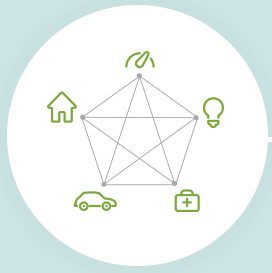
One of Australia’s leading home energy monitoring hardware companies, WattWatchers, has joined forces with up and coming internet-of-things outfit, Future Grid, to tap the huge potential demand response market that is tipped to be a key pillar of the national electricity market as it transitions to renewables.
The “software meets hardware” partnership, announced by the two companies on Thursday, will focus on providing energy retailers and distributors with accurate, reliable and real-time visibility of the 1.7 million (and counting) rooftop solar systems installed on Australian homes and businesses – and the batteries gradually being added to those – that operate behind utility billing meters.

The two companies – using WattWatchers’ energy metering hardware and Future Grid’s software platform – would also provide insight into some of the major drains on the grid from the residential market, including air-conditioners, pool pumps, and electric vehicle chargers as more of these start to come online.
As Australian Energy Market Operator chief Audrey Zibelman has repeatedly stressed in her time in the role, harnessing these valuable, but currently invisible, resources – and a better understanding of patterns of consumer demand – will be key to making a renewables-dominated grid more reliable and efficient, and to driving down power costs.
Done well, it could even negate the need to build new large-scale power generation capacity, let alone to keep old coal plants open longer than they should be.
And industry is beginning to heed the call, with established energy players teaming up with IoT start-ups to get a handle on innovative new ways to buy and sell power, including peer-to-peer trading, the launch of a decentralised energy exchange, and the creation of virtual power plants made up of home solar and storage.
In its collaboration with Future Grid, Wattwatchers – which is also a partner in GreenSync’s recently launched deX venture – will use its energy trackers to monitor and control electrical circuits in real-time over the internet, operating independently of the utility-controlled meters used to bill customers and manage energy markets.
The company says that one of its metering devices can monitor up to six electrical circuits in a home or small business, including whole-of-site consumption and any imports from or exports to the main electricity grid.

Future Grid, a software company that specialises in transforming billions of data points into real-time decisions, will use the collected data to guide real-time machine learning to augment and automate decisions.
It could, for example, show grid operators the real-time status and impact of unlimited numbers of homes and their rooftop solar systems, storage batteries, air-conditioners, pool pumps and other circuit-level actors on the energy stage, the company says.
“The combination of Wattwatchers and Future Grid is a perfect match for energy retailers and distributors alike,” said Future Grid co-founder and managing director, Chris Law.
“Working with Wattwatchers was a natural software-meets-hardware partnership for his company as the ‘Internet of Energy’ started to move from an idea to an operating reality.
“As the sector transitions towards a decentralised model the ability to deliver high-quality, decision-ready data – at massive scale – will be a foundational component of the way electricity will be managed in this country,” Law said.
Wattwatchers, meanwhile, recognised the need for a partner to make sense of the enormous amounts of highly-granular energy data its devices have the potential to capture.
“Making sense of all that data at a grid-wide scale needs the kind of processing power that the Future Grid Platform has already developed and proven since they launched two years ago,” said WattWatchers CEO Gavin Dietz in comments on Thursday.
“We’re delighted to have this opportunity to work with the Future Grid team.”
The companies have signed a Memorandum of Understanding to guide their collaboration and have already begun work on proof-of-concept demonstrations of their combined approach to ‘Internet of Energy’ solutions, they said.










